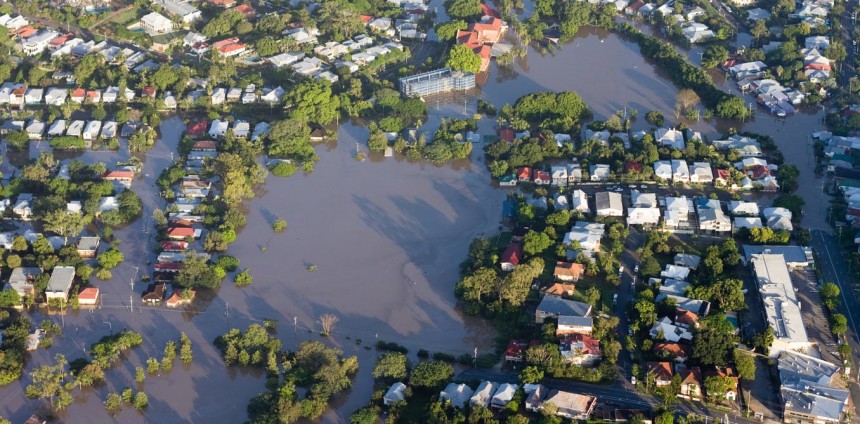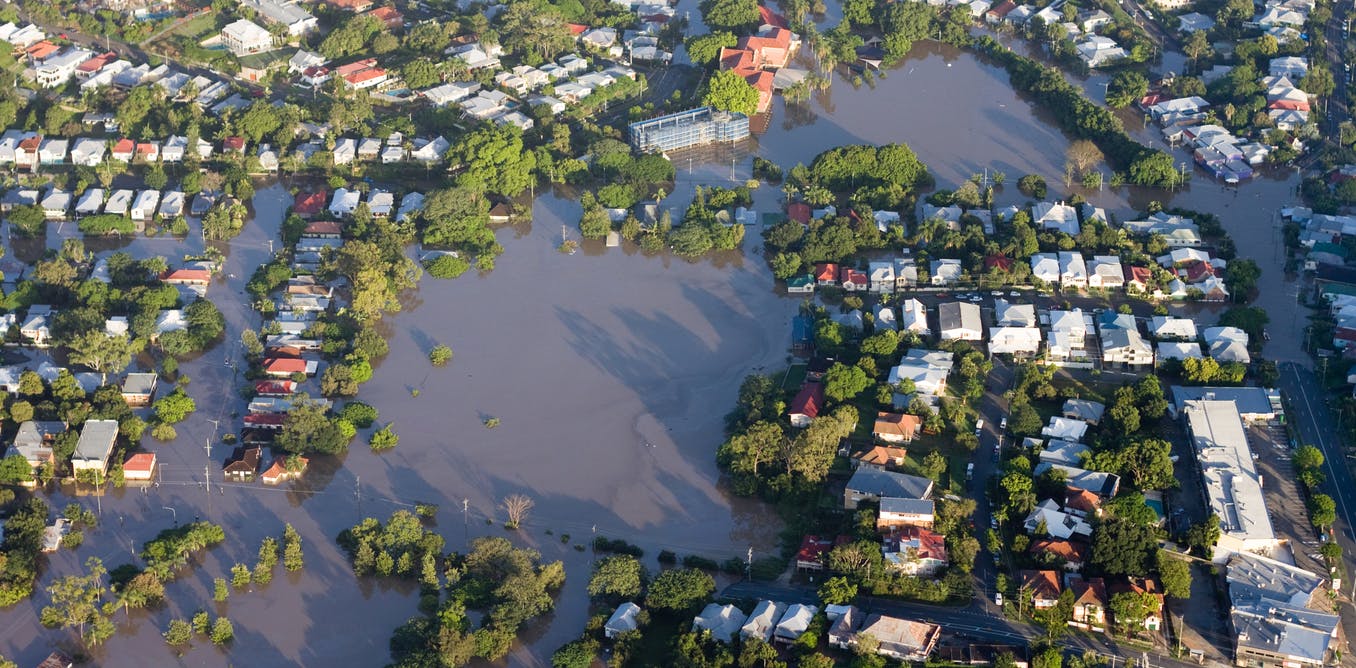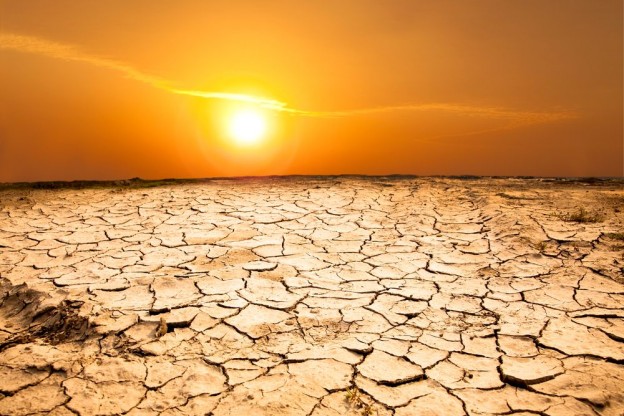Water in the Anthropocene: predicting how we interact with our modified environment

In predicting the trajectory of future climate, water and ecosystems, we can no longer ignore the many ways in which human feedbacks modify our natural systems.
The 5th national OzEWEX workshop explored how well we understand stores and fluxes of water and energy at the landscape scale subject human influences including greenhouse gas emissions, landscape, soil and vegetation modification, water extraction and river regulation. The topic was approached from a biophysical perspective but also social, economic, ecological, engineering and policy perspectives.
The workshop was held at the Australian National University in Canberra on 31 January and 1 February 2019. The workshop coincided with the culmination of the 3rd Australian Climate and Water Summer Institute, at which 18 early career researchers worked in teams on a variety of projects over a period of six weeks. The workshop was divided into three themes.
Theme 1: Dynamics of human-environmental interactions
The workshop first reviewed how the environment is modified by human actions, and how human behaviours in turn respond to changes in the environment. The presentations were kicked off by Stuart Bunn, the Director of the Australian Rivers Institute, who described both the research and planning implications of the Anthropocene on how we manage our water. Stuart emphasised the importance for science to focus on solutions; and the need for society to better balance water needs for humans and nature, address water pollution, restore connectivity and provide a balanced voice in the public discourse on water.
Colin Mues, from the Murray Darling Basin Authority, reflected on Australia’s rich history of policy development in Australia’s largest and most contested watershed, and the need to continue the work into the future. Key messages were to ensure adaptive management to allow for continual learning, and the need to develop an improved understanding of how climate change may influence environmental resilience, water quality, agricultural productivity and various other water management issues in the basin. Jamie Pittock from the Australian National University also motivated his presentation through a review of the history of water reform in Australia, and highlighted the need for greater transparency in water-related decisions, the need to recover additional water to achieve measurable improvements to environmental outcomes, and that we must prepare for the prospect of a future with less water.
One feature of the Murray-Darling Basin is the presence of water markets, in which ownership of water has been separated from ownership of land, which means that farmers and other parties can buy and sell water as part of a sophisticated water trading regime. Sarah Wheeler, of the Centre for Global Food and Resources at the University of Adelaide, spoke about behavioural responses of farmers to water markets, and Tom Rooney, Chief Executive of water trading company WaterFind, delved into the complex world of water market dynamics. Tom highlighted that their company alone has facilitated the transfer of 3000 GL of water across 22,000 transactions, representing a value of about $1bn and more than a quarter of mean annual water use. The dynamics of the markets in terms changes to water pricing, and the function of derivative markets in water trading, provided a fascinating insight into how these sorts of markets will become increasingly relevant for understanding basin-wide water stores and fluxes.
The dynamic evolution of landscapes in response to climate was raised by Holger Maier of the University of Adelaide, who presented on scenario-based approaches for capturing landscape dynamics, highlighting that land use is critical in linking human and natural systems and that this would require understanding the spatial and temporal dynamics of land use change. By providing land-use dynamics platforms, this then can be coupled to other models to understand feedbacks and explore plausible future scenarios. The UNHaRMED (Unified Natural Hazard Risk Reduction Exploratory DSS) was illustrated as an example of how this framework can be applied for understanding adaptive responses to natural hazard risk.
The dynamics of human actions on the environment take many forms. Michael Liddell from James Cook University spoke about relative climate and human impacts on humid tropics ecosystems, whereas Shaun Levick from the CSIRO spoke about a similar topic in the context of savannah ecosystems, including the importance of climate and water in driving fire regime, the carbon cycle and ecology. Both highlighted significant human impacts that included a broad range of drivers and suggested that the link between climate and humans often was subtle, with complex feedbacks and non-linear dynamics.
Craig Simmons, of the National Centre for Groundwater Research and Training and Flinders University, gave an inspiring presentation that focused on groundwater challenges and opportunities. He highlighted the importance of a national water strategy that linked a broad set of disciplines to focus on significant problems. Understanding the interface between water research and other parts of the system was highlighted as critical, with the food-energy-water nexus being a key challenge for the 21st century. Neil McIntyre from the University of Queensland then spoke about the water-energy-climate nexus from a mining perspective, highlighting that even though mining consumes relatively little water when considered from a national or global perspective, water consumption is highly significant in the semi-arid and arid regions where mining frequently occurs. In mine operations, there is also often a significant trade-off between energy and water, with greater levels of water efficiency requiring higher levels of energy and vice versa.
Theme 2: Implications of Climate Change: The Long View
The Millennium Drought, which occurred in the first decade of the millennium, was one of the worst droughts to occur in Australia since European settlement. Francis Chiew from the CSIRO reflected on what might happen if the drought was to reoccur, given the significant changes that have occurred in the basin even over the last decade. Given climate projections generally point at a decline in water availability in the Murray-Darling Basin, he raised the question of how to manage the balance between consumptive water and environmental water under the scenario of ever-decreasing total water availability.
Fiona Johnson, from the University of New South Wales, then talked about climate change, water and—criticality—of considering people in dealing with water challenges, highlighting the need for knowledge in history, culture, politics, economics and inter-disciplinary communication to supplement more technical skills. Lastly, Yongqiang Zhang from the CSIRO then spoke about the role of urbanisation in changing surface energy and water balances, and the need to consider various measures to improve urban resilience through improving surface and groundwater connectivity.
Theme 3: Data, Modelling and Information Services
Robert Argent, General Manager of Water at the Bureau of Meteorology, spoke about how Australian water information services are changing water management. Argent highlighted the data value chain, and the need to move along the spectrum from data to information to insight, with the latter enabling additional focus on key societal questions such as “how”, “why” and “so what”. The outcomes of these services include more timely and evidence-based decisions, more trust, and support for investment prioritisation.
Tony Jakeman, of the Integrated Catchment Assessment and Management Centre at the Australian National University, described the role of human decision making in hydrologic predictions and assessment. Key messages were the importance of accommodating uncertainty from the outset, the role of models (not just prediction, but also building knowledge, trust and capacity), and the need to embrace subjectivity and think cleverly about quantitative and qualitative uncertainty methods. Many of these sentiments were echoed by Geoff Podger from the private company Water Bubly, who spoke about human feedbacks in river management modelling, including the significant need to manage trade-offs in terms of issues, priorities, and stakeholders. The role of models can be used to provide robust and defensible evidence to support negotiations.
Claire Krause from Geoscience Australia demonstrated the role of remote sensing for trusted and transparent water management, with emerging technologies capable of estimating the water content in relatively small farm dams. Mark Thyer from the University of Adelaide spoke about seasonal streamflow forecasting for water management, with a strong emphasis on accurately representing modelling uncertainty. A key message of the presentation is the role of passionate humans and partnerships in ensuring that scientific research is translated into national-scale impact. Staying on the theme of remote sensing, Ashish Sharma from the University of New South Wales presented research on measuring river discharge through satellite-based passive microwave remote sensing and highlighted the potential to improve our ability to detect flood signals in ungauged basins.
Chantal Donnelly, Unit Head of Water Resources Modelling at the Australian Bureau of Meteorology, discussed ways of incorporating human activities into large-scale water models such as the Australian Water Resources Assessment (AWRA) modelling system. After reviewing the ways by which human decisions such as irrigation and reservoir operations are included in global and continental scale modelling, she concluded with a roadmap of improvements to the AWRA system to the year 2021 and beyond. On a similar theme, Annette Hirsch of the Australian National University spoke about including water management in climate models, highlighting the opportunities afforded by higher resolution remote sensing and modelling. She concluded that embedding hydrological models into climate models can lead to significant improvements in representing land-atmosphere interactions. Lastly, Marcus Thatcher from CSIRO spoke about the potential of high-resolution climate model simulations using the Cubic Conformal Atmospheric Model to understand local scale convective rainfall effects in regions with complex topography or experiencing urban-scale land-use change.
Australian Climate and Water Summer Institute presentations
A highlight of the workshop was the project presentations from the Australian Climate and Water Summer Institute research fellows. Project topics included understanding links between fuel moisture, soil moisture and vegetation type; an intercomparison of machine learning methods for estimating continental carbon and water fluxes; quantifying wetland volume change in the Murray-Darling Basin using remote sensed data; characterising hydrological uncertainty using rainfall ensembles; understanding post-bushfire streamflow response dynamics; and the links between blue-green algae and water temperature.



